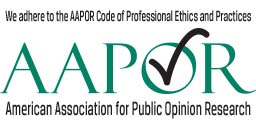The Impact of Supply Chains Management on Organization's Performance during the Corona Virus Pandemic in Safeway Chain Centers Located in Amman/Jordan
DOI:
https://doi.org/10.25255/2306.8043.2022.10.1.1.35Anahtar Kelimeler:
Supply Chains Management- Organizational Performance- Safeway Centers- Corona Virus Pandemic- JordanÖzet
This study aimed to identify the impact of supply chains management on the organization’s performance during the Corona virus pandemic; more precisely in Safeway Centers located in Amman/Jordan. The analytical descriptive approach was used, and based on collecting 45 questionnaires out of 50 from managers and head of departments, the results showed that while the relationship with customers and sharing information impacted the performance of Safeway centers, both of relationship with suppliers and relationship with distributors did not. Also, the study revealed that there are no statistically significant differences in the performance of supply chains with its dimensions among Safeway centers attributed to demographic factors (gender, job title, experience, educational qualification, age of the facility and the number of employees); whereas statistically significant differences found regarding the age factor for the category of 30-less than 40 years old. The study made many recommendations, especially carrying out future studies on other organizations and other variables to enhance supply chains management.
İndirmeler
Referanslar
AL Manaseer, M., Maqableh, M., Alrowwad, A., & Masa’deh, R. (2019). Impact of information technology on organizational performance in Jordanian public government entities. Jordan Journal of Business Administration, 15(4), 489-516.
Anderson, D.L., Britt, F.E., & Favre, D.J. (1997). The seven principles of supply chain management. Supply Chain Management Review, 1(1), 31-41.
Asamoah, D., Agyei-Owusu, B., Andoh-Baidoo, F.K., & Ayaburi, E. (2021). Inter-organizational systems use and supply chain performance: mediating role of supply chain management capabilities. International Journal of Information Management, 58, 102195.
Bratić, D. (2011). Achieving a competitive advantage by SCM. IBIMA Business Review, 2011, 1-13. DOI: 10.5171/2011.957583.
British Standards Institute (BSI) (2000), BSI – EN ISO 9001: 2000. Quality Management System Requirements, BSI, London.
Fan, H., Li, G., Sun, H., & Cheng, T.C.E. (2017). An information processing perspective on supply chain risk management: antecedents, mechanism, and consequences. International Journal of Production Economics, 185, 63-75.
Husnan, S. (2001). Manajemen Keuangan Teori Dan Penerapan (Keputusan Jangka Pendek) Buku 2 Edisi 4 Cetakan Pertama. Yogyakarta: BPFE.
Kalia, N., & Bhardwaj, B. (2019). Contextual and task performance: do demographic and organizational variables matter?. Rajagiri Management Journal, 13(2), 30-42.
Krejcie, R., & Morgan, D. (1970). Determining sample size for research activities. Educational and Psychological Measurement, 30, 607-610.
Kuei, C.H., & Madue, C.N. (2002). Developing supply, chain strategies based on the survey of supply chain quality and technology management. International Journal of Quality & Reliability Management, 19(7), 889-901.
Lee, H.L., Padmanabhan, V., & Whang, S. (1997). Information distortion in a supply chain: the bullwhip effect. Management Science, 43(4), 546-558.
Li, S., Ragu-Nathan, B., Ragu-Nathan, T.S., & Rao, S.S. (2006). The impact of supply chain management practices on competitive advantage and organizational performance. Omega, 34(2), 107-124.
Likert, R. (1932). A technique for the measurement of attitudes. Archives of Psychology, 22, 140, 55.
Masa’deh, R. (2013). The impact of information technology infrastructure flexibility on firm performance: an empirical study of Jordanian public shareholding firms. Jordan Journal of Business Administration, 9(1), 204-224.
Mask Jr., R.L. (2018). The Relationship of Social Capital, Supply Chain Integration Implementation and Customer Loyalty, and Their Relationship to Firm Performance (Doctoral dissertation, Capella University).
Milgate, M. (2001). Supply chain complexity and delivery performance: an international exploratory study. Supply Chain Management: An International Journal, 6(3), 106-118.
Militaru, G., & Şerbănică, D. (2008). Competitive advantage by integrated e-business in supply chains: a strategic approach. Journal Management & Marketing, 6(1), 27-36.
Min, S., & Wolfinbarger, M. (2005). Market share, profit margin, and marketing efficiency of early movers, bricks and clicks, and specialists in e-commerce. Journal of Business Research, 58(8), 1030-1039.
Rao, P. (2002). Greening the supply chain: a new initiative in south east Asia. International Journal of Operation & Production Management, 22(6), 632-655.
Ross, D. (1998). Competing Through Supply Chain Management: Creating Market-Winning Strategies Through Supply Chain Partnerships. Springer US.
Rudberg, M., Klingenberg, N., & Kronhamn, K. (2002). Collaborative supply chain planning using electronic marketplaces. Integrated Manufacturing Systems, 13(8), 596-610.
Sarkar, S., & Banerjee, S. (2020). Brand co-creation through participation of organization, consumers, and suppliers: an empirical validation. Journal of Product & Brand Management, Vol. ahead-of-print No. ahead-of-print. https://doi.org/10.1108/JPBM-01-2020-2732
Samii, A.K. (2004). Stratégie Logistique: Supply Chain Management. Paris: Dunod.
Sekaran, U., & Bougie, R. (2016). Research Methods for Business: A Skill Building Approach, 7th Edition, John Wiley & Sons.
Simon, A.T., Serio, L.C.D., Pires, S.R.I., & Martins, G.S. (2015). Evaluating supply chain management: a methodology based on a theoretical model. Revista de Administração Contemporânea, 19(1), 26-44.
Sohal, A.S., Power, D.J., & Terziovski, M. (2002). Supply chain management in Australian manufacturing—two case studies. Computers & Industrial Engineering, 43(1-2), 97-109.
Sukati, I. Hamid, A.B.A., Baharun, R., Alifiah, M.N., & Anuar, M.A. (2012). Competitive advantage through supply chain responsiveness and supply chain integration. International Journal of Business and Commerce, 1(7), 1-11.
Thilmany, D., & Grannis, J. (1998). Marketing food products: direct sales vs. distributors and brokers. Agricultural Marketing Report (Colorado State University. Dept. of Agricultural and Resource Economics); AMR 98-04.
Urbaniak, M. (2020). The role of process improvements tools in building relationship between suppliers and industrial clients. Journal of International Business Research and Marketing, 5(6), 13-18.
Bibliography
Abu Zayyad, Z., Obeidat, Z., Alshurideh, M., Abuhashesh, M., & Maqableh, M. (2021). Corporate social responsibility and patronage intentions: the mediating effect of brand credibility. Journal of Marketing Communications, 27(5), 510-533.
Almomoni, M.A. (2021). The importance of supply chain management in achieving competitive advantage: a theoretical study. Journal of Social Sciences (COES&RJ-JSS), 10(2), 194-207 .
Almomoni, M.A. (2021). The Usage of Balanced Scorecard (BSC) in evaluating the performance of the university of Jordan/Aqaba branch from the academic staff perspective. Journal of Social Sciences (COES&RJ-JSS), 10(2), 232-247.
Almomoni, M.A., & Alkhalayleh, W.A. (2021). Application of knowledge management requirements in the mining industries sector from the employees' point of view: a suggested case study on the Jordan phosphate mines company. Journal of Business & Management (COES&RJ-JBM), 9(2), 31-39.
Maqableh, M.M., & Mohammed, A.B. (2016). Modeling teachers influence on learners self-directed use of electronic commerce technologies outside the classroom. Scientific Research and Essays, 11(4), 29-41.
Masa'deh, R., Shannak, R., Obeidat, B., Almajali, D., & Dahalin, Z. (20210). Investigating a causal model of IT-business partnership and competitive advantage. Proceedings of the 14th IBIMA Conference on Global Business Transformation through Innovation and Knowledge Management: An Academic Perspective, Istanbul-Turkey, 23rd-24th June, pp. 1250-1260.
Obeidat, Z., Alshurideh, M., & Al Dweeri, R. (2019). The influence of online revenge acts on consumers psychological and emotional states: does revenge taste sweet?. Paper presented at the Proceedings of the 33rd International Business Information Management Association Conference, IBIMA 2019: Education Excellence and Innovation Management through Vision 2020, 4797-4815.
Shannak, R.O., Al-Zu'bi, Z.M.F., Obeidat, B.Y., Alshurideh, M., & Altamony, H. (2012). A theoretical perspective on the relationship between knowledge management systems, customer knowledge management, and firm competitive advantage. European Journal of Social Sciences, 32(4), 520-532.








 a Creative Commons Attribution 4.0 International License.
a Creative Commons Attribution 4.0 International License.